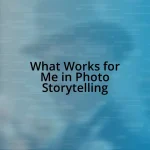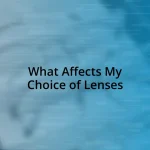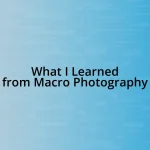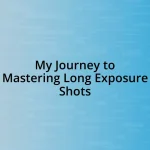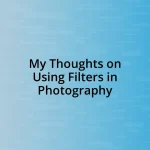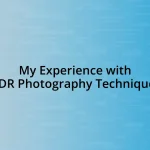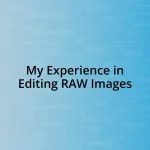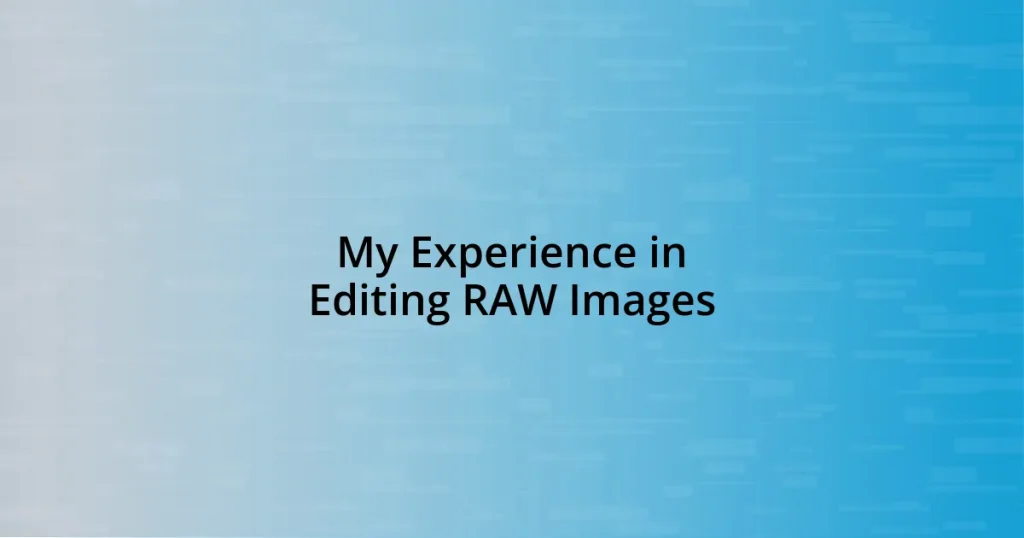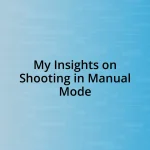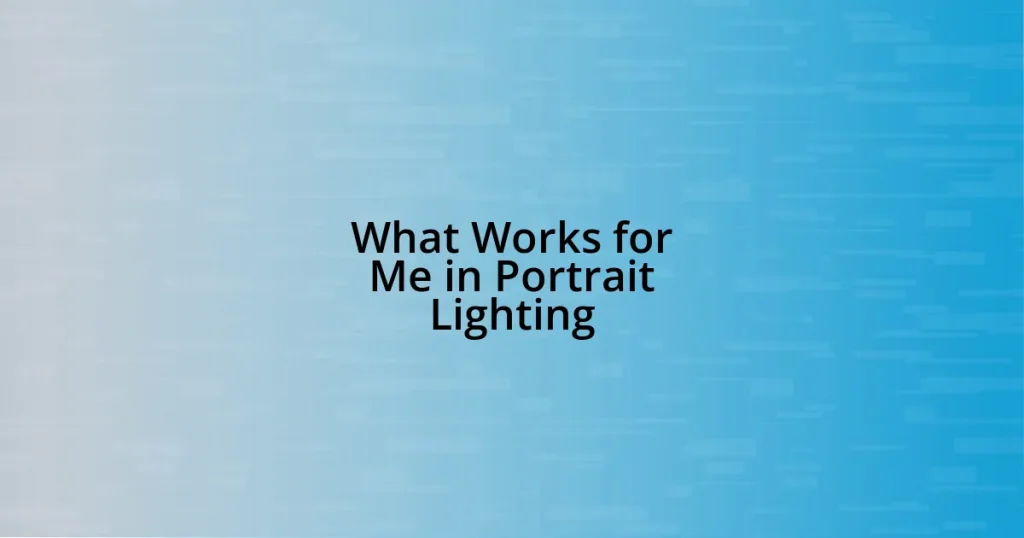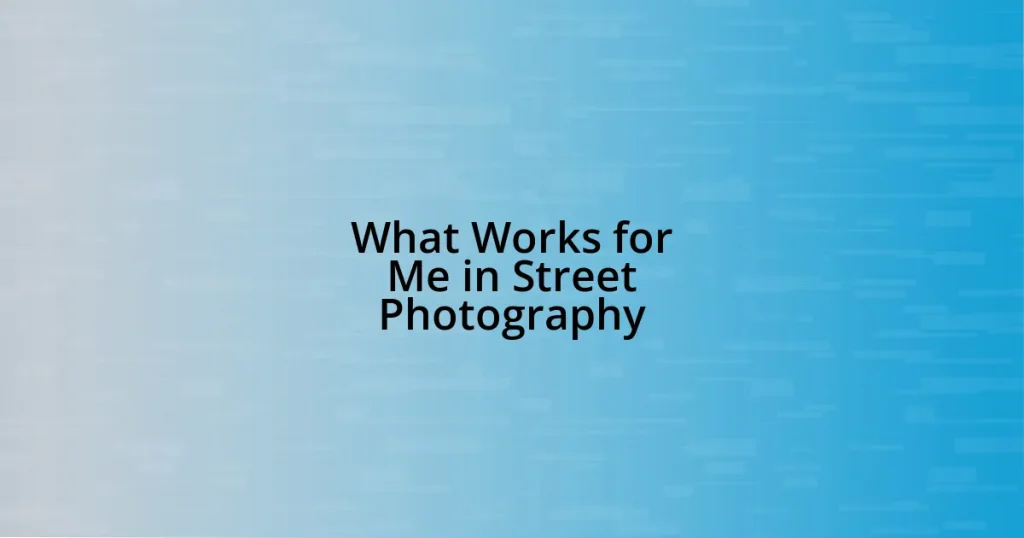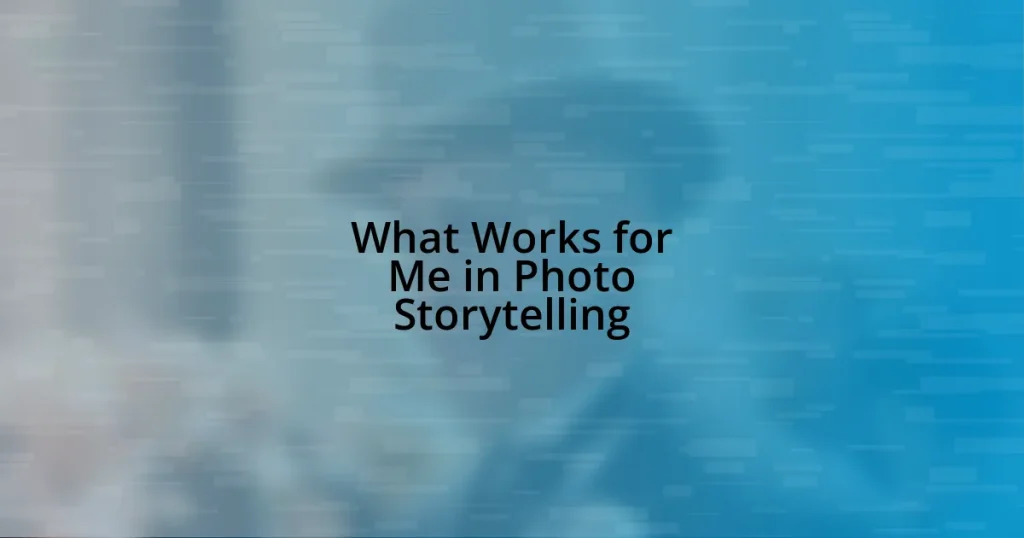Key takeaways:
- RAW image format allows for extensive editing and recovery of details without loss in quality, facilitating creative expression.
- Essential tools for editing include software like Adobe Lightroom and Capture One, high-resolution displays, and the use of presets for consistency.
- Common mistakes to avoid involve neglecting monitor calibration, overdoing sharpness, and overly relying on presets, which can compromise creativity and quality.
- Finalizing images requires attention to detail, careful format selection for export, and inclusion of metadata to enhance viewer understanding and connection.
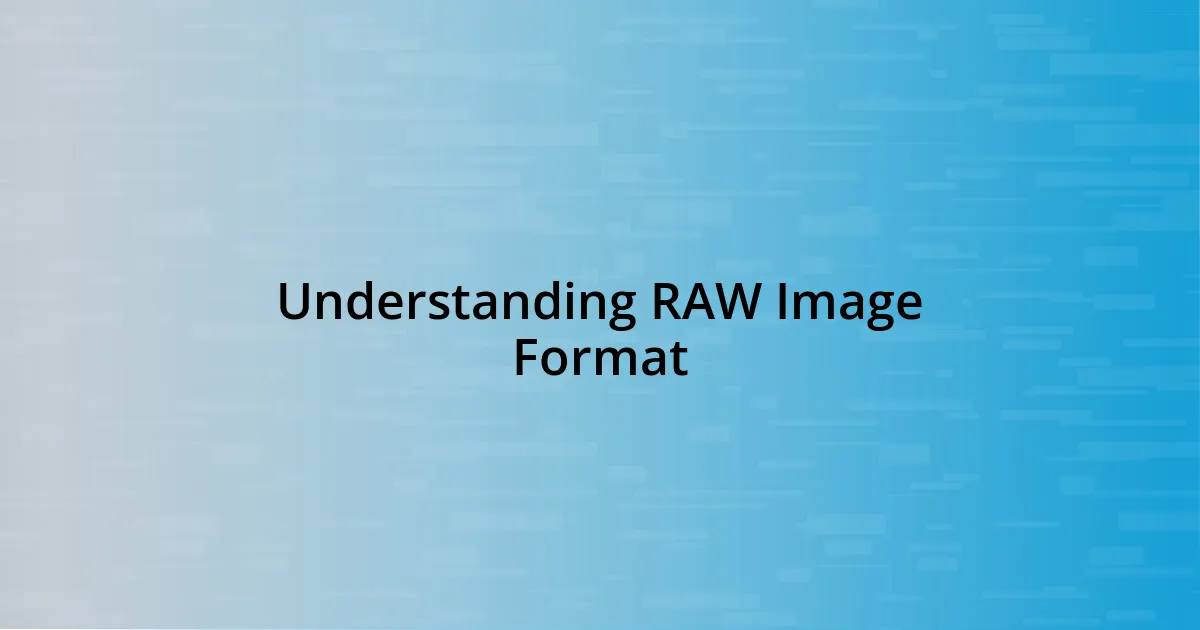
Understanding RAW Image Format
RAW image format is often described as a digital negative, capturing unprocessed data straight from the camera sensor. When I first transitioned to shooting in RAW, I was immediately struck by the incredible detail and dynamic range it offered. It felt liberating to have so much more information at my fingertips, allowing me to truly craft my images in post-processing.
One thing that can be surprising is how the file size of RAW images often doubles or triples compared to JPEGs. I remember feeling a bit overwhelmed when I first noticed this; I had to reassess how I stored and managed my photos. It’s a small trade-off, but that extra room for quality makes all the difference. Have you ever had to make adjustments to your workflow for quality? I certainly had to adapt to this change initially.
Working with RAW files also enables extensive editing options without compromising image quality. I recall a moment when I was able to recover the highlights in a sunset photo that I thought was lost forever. The thrill of pulling detail out of those bright areas made me appreciate the flexibility RAW provides. Just think—how many moments have you captured that could benefit from that kind of editing freedom? It’s a powerful reminder of the potential hidden within each shot.
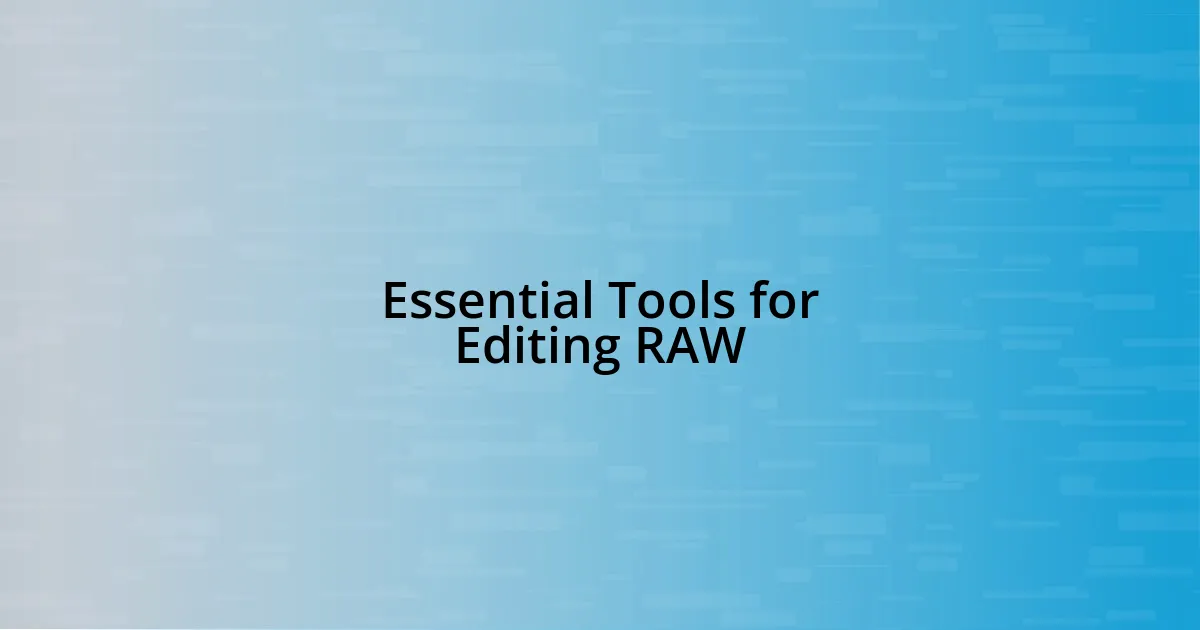
Essential Tools for Editing RAW
Editing RAW images can be complex, but having the right tools is crucial for achieving stunning results. Personally, I treasure my editing software like Adobe Lightroom and Capture One. These applications not only support various RAW file formats but also offer robust features for adjustments. I remember the first time I used Lightroom; the interface felt welcoming, and the organization tools helped me regain control over my vast collection. How did you feel when you discovered software that made editing easier for you?
In addition to software, a reliable computer setup can make a world of difference. When I upgraded to a powerful laptop with a high-resolution display, the difference was palpable. I could see the subtle color shifts and details in my photos much more clearly, making it easier to refine my edits. It’s fascinating how the right hardware can elevate the entire editing process, isn’t it?
Lastly, let’s not overlook the value of plugins and presets. I’ve tried countless presets, and finding ones that match my style has been a game-changer. They save time and help maintain a consistent look across my projects. Reflecting on my journey, I often think about how these tools have helped shape my photography style. They’re not just tools; they’re essential partners in my creative process.
| Tool | Description |
|---|---|
| Adobe Lightroom | Comprehensive RAW editing software with efficient organization capabilities. |
| Capture One | Powerful editing tool preferred by professionals for its advanced color grading options. |
| High-Resolution Display | Enhances detail and color accuracy during editing, critical for fine-tuning images. |
| Presets | Speed up the editing process and ensure a consistent aesthetic throughout your work. |
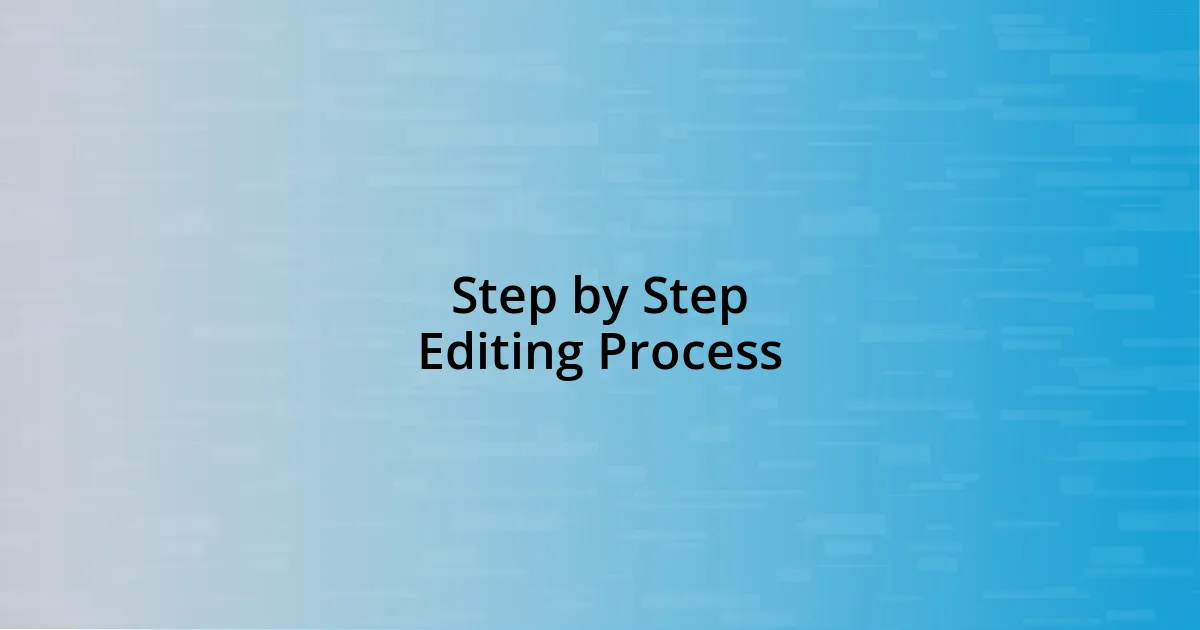
Step by Step Editing Process
Once I’ve selected the images to edit, the first step in my process begins with basic adjustments. This is often where I feel the most excitement. It’s such a pivotal moment when I adjust the exposure and contrast, and you can almost see the image come to life right before my eyes. I remember the feeling of awe I experienced when I first discovered the power of the histogram—how it guides my adjustments and ensures I’m not clipping those precious highlights or shadows.
Here’s a quick rundown of my typical sequence in this initial phase:
- Crop and Align: I start by cropping out distractions and making sure everything is perfectly aligned.
- Exposure and Contrast: Adjust the overall exposure and tweak contrast to enhance depth.
- White Balance: I usually adjust the white balance to ensure the colors are true to life.
- Highlights and Shadows: Recover highlights and reveal details in the shadows, which often brings a new dimension to the photo.
Continuing from the basics, I dive into more creative edits. This is the part where my imagination runs wild! Adjusting saturation and vibrance allows me to infuse mood into the image. It truly amazes me how a small change can evoke different emotions. In one of my recent projects, I played with the vibrance, and voilà! My sunrise photo transformed into a breathtaking masterpiece that captured the essence of that moment. It felt exhilarating to color my memories so vividly.
To clarify my dive into this stage, I typically follow these steps:
- Saturation and Vibrance: I boost colors without overwhelming the image’s integrity.
- Sharpening: I apply subtle sharpening to enhance details, making sure it doesn’t look overly artificial.
- Noise Reduction: I target noise reduction, especially in low-light images, to maintain a clean visual.
- Local Adjustments: Finally, I make localized edits—like adjustment brushes or gradients—to fine-tune specific areas and give the image that polished feel.
This method has become my creative outlet, allowing me to express the story behind each shot. It’s a rewarding journey I cherish deeply!
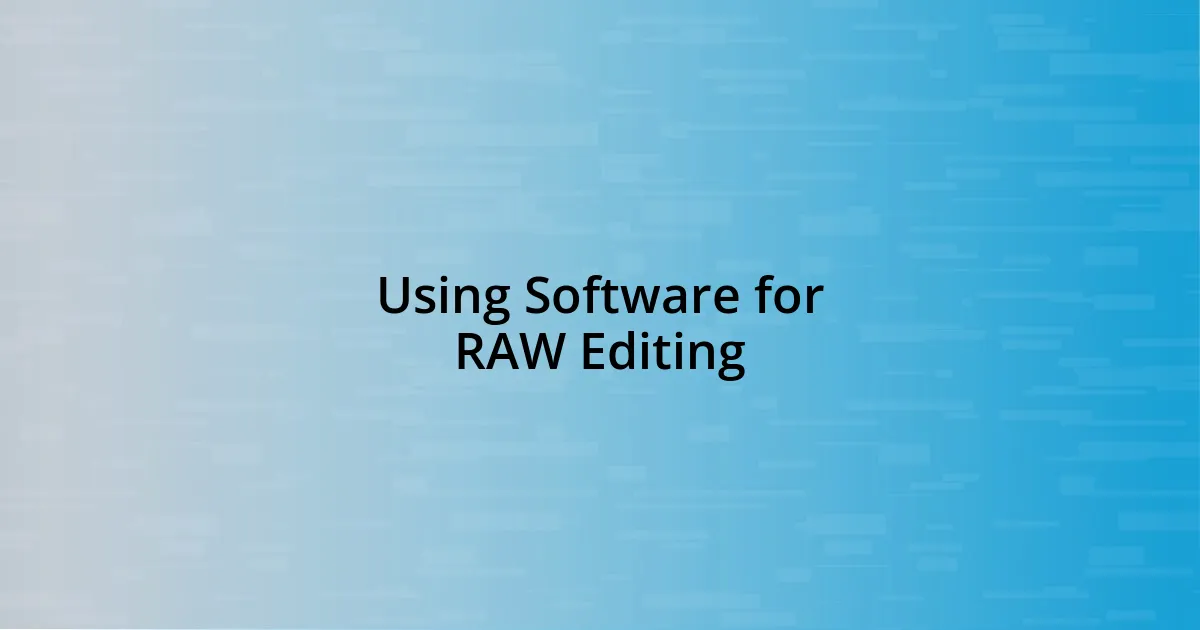
Using Software for RAW Editing
Using software for RAW editing can completely reshape your photographic experience, offering a playground for creativity and precision. I remember my initial struggles with adjusting exposure and colors in post-processing; it felt overwhelming. Then I discovered the adjustment sliders in Lightroom. Suddenly, I could transform my images with just a few clicks, which ignited my passion for editing! Have you experienced that moment when the software feels like an extension of your creative vision?
As I navigated the software, I quickly learned the importance of utilizing various tools within these applications. For instance, using local adjustment tools like brushes and gradients opened up a new world for me. I recall a photo of a landscape where the sky looked dull. By selectively enhancing its color and brightness, I made the sky pop and added drama to the scene. Isn’t it fascinating how a single adjustment can evoke such powerful emotions?
Over time, I’ve also delved into advanced features like color grading and lens corrections. When I first experimented with color wheels in Capture One, it was like unlocking a new level in my editing journey. The ability to adjust specific color ranges helped me convey exactly what I felt during the shoot. Embracing these software capabilities not only improved my images but also deepened my connection to the art of photography. Have you explored the different levels of editing in your own work? If not, I’d highly encourage you to dive in—you’ll likely discover new dimensions to your creativity!
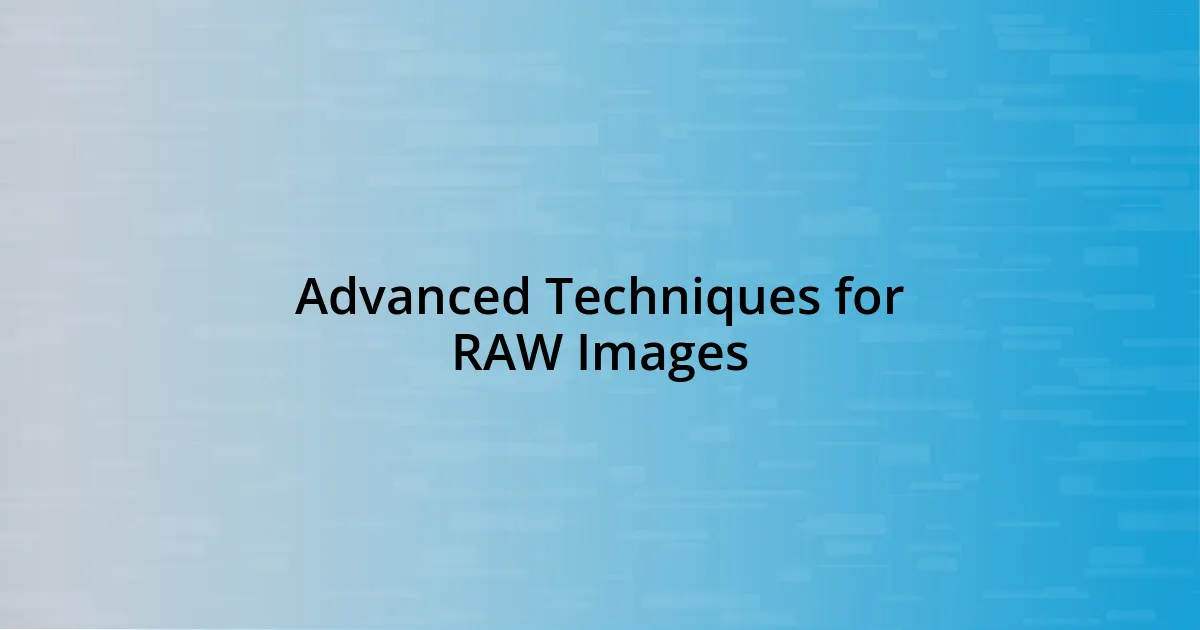
Advanced Techniques for RAW Images
When I ventured into the world of advanced techniques, one method that truly captivated me was using the graduated filter in my editing toolkit. It’s amazing to consider how simply darkening a sky while lightening the foreground can create a dramatic and balanced composition. One of my favorite memories is editing a landscape shot where the sunset blended with storm clouds; playing with that filter dramatically intensified the atmosphere, making the viewer feel as if they were right there with me. Have you tried manipulating light in this way?
Another technique that piqued my interest was the use of luminosity masks. Initially, wrapping my head around the concept seemed daunting, but the results were worth the effort. By isolating brightness levels, I found the ability to adjust tones in specific areas without affecting others. I recall editing a portrait where I wanted to brighten the subject’s face while leaving the background untouched. The elegance of using masks helped me maintain focus, leading to a stunning portrait that felt well-balanced. Isn’t it thrilling to have that level of control?
Lastly, I can’t emphasize enough the value of non-destructive editing. When I first started, I often made changes that gave me a sinking feeling of regret. Now, thanks to layers and adjustment layers, I can experiment freely, knowing I can always revert to the original image. I remember a time I went overboard with a filter during a nighttime shoot—it looked horrendous! Fortunately, I could undo the changes without starting from scratch. This flexibility not only enhances my workflow but also encourages me to push creative boundaries without hesitation. How liberating is it to know that every step can be reversed?
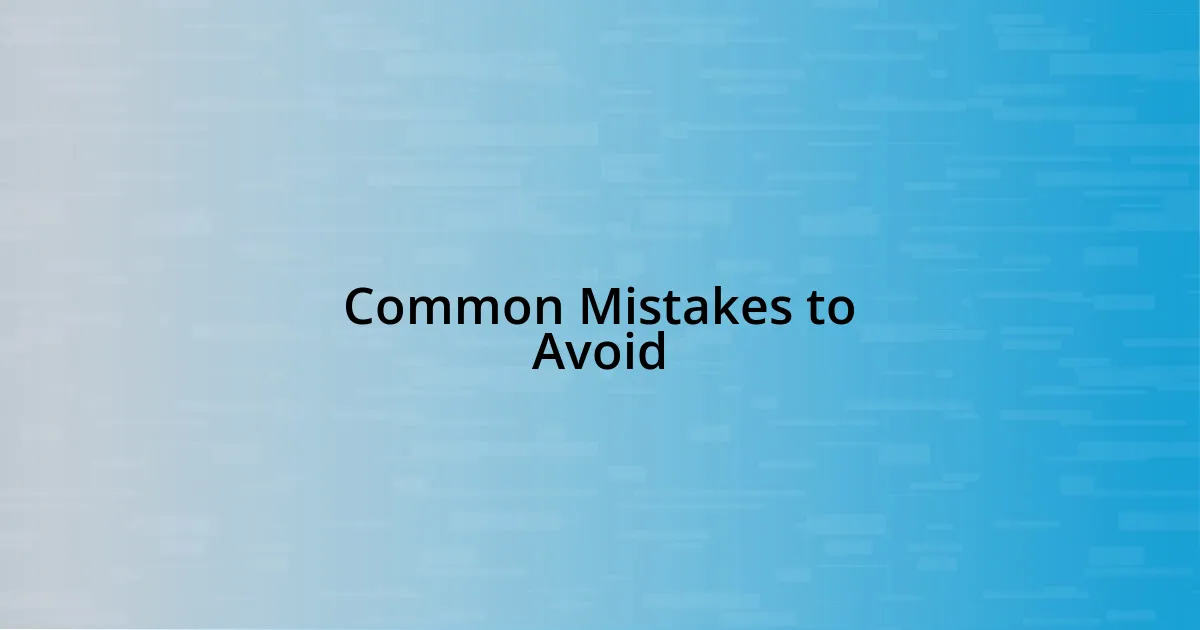
Common Mistakes to Avoid
One common mistake I made early on was neglecting to calibrate my monitor before editing. I vividly recall spending hours tweaking colors only to discover that my final images appeared entirely different on other screens. It was disheartening to realize that what I thought was a perfect edit was simply a product of poor color accuracy. Have you ever had that sinking feeling when your work doesn’t match your expectations? Trust me, taking the time to calibrate your monitor can save you from that frustration.
Another pitfall I often found myself in was excessive sharpness. I remember the first time I discovered the sharpening slider—it was almost too tempting to crank it up to the max to make every detail pop. However, I soon noticed that this approach often introduced unwanted noise and made my images look unnatural. I’ve learned that subtlety is key; a small nudge can enhance without overwhelming. Have you ever overdone an adjustment and regretted it later? Sometimes less really is more.
Lastly, relying too heavily on presets can stifle your creativity. I recall downloading an array of presets, thinking they could instantly transform my photos. While they were fun to play with initially, I discovered that they often didn’t match my personal style or vision. Personalizing your edits allows your unique perspective to shine through. Have you fallen into the trap of overusing presets? Embracing your individual editing style can lead to a more authentic body of work.
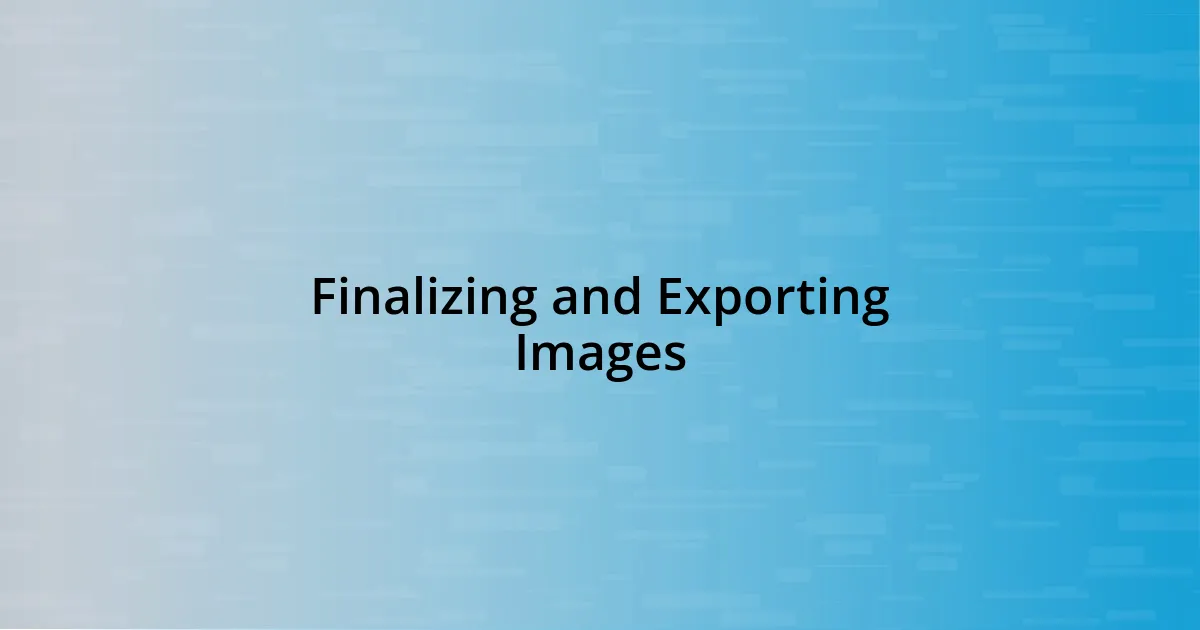
Finalizing and Exporting Images
Finalizing and exporting images is a crucial step that can significantly impact how your work is perceived. After spending countless hours editing, I’ve learned that taking the time to carefully review each detail is essential. I often zoom in to check for artifacts or unintentional oversights, like stray spots or sharp edges. It’s that moment of reflection that captures the essence of what I’ve created—does everything look as I envisioned it?
When it comes to exporting, I’ve discovered the importance of selecting the right file format and settings. For instance, I usually choose TIFF for prints because it preserves quality, while JPEG works well for web use due to its smaller file size. I remember accidentally exporting a high-quality image as a low-res JPEG once; it was frustrating to see it lose detail on a large screen. Are you mindful of how different formats can affect your final output? Understanding these nuances can elevate your presentation.
Additionally, I never overlook metadata. Including information like camera settings and location can enhance the context of my images for viewers. I recall a moment during an exhibition when someone asked about a particular shot; having that metadata readily available made it easy to share the story behind it. Isn’t it rewarding when you can deepen a viewer’s connection to your work through those details? By doing this, I ensure that my images not only speak visually but tell a richer, more informative story.



